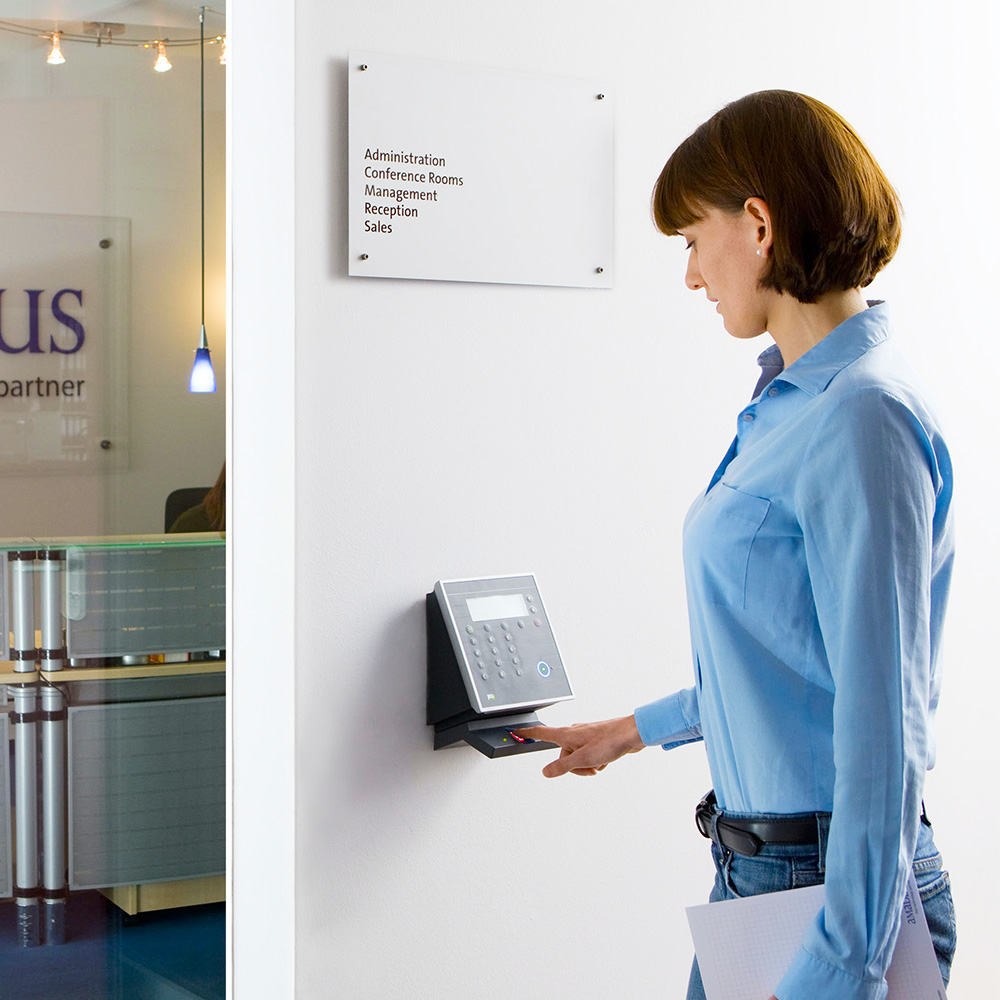But, what exactly is biometric access control, how does it work and what are the types of biometric access control? In this short article, we give answers to all these questions, including where biometric access technology is heading.
What exactly is biometric access control?
As the name suggests, biometric access control is a way of using stored biometrics, such as physical, behavioural or chemical attributes, to control access to a premises via manually-controlled doors and automatic door systems, such as an automatic sliding glass door.
How does biometric access control work?
As mentioned above, biometric access control uses biometrics to determine a person's identity prior to allowing or refusing them access to a manually operated door, or power-assisted doors.
The attributes most commonly used in biometric access control include:
- Facial
- Fingerprints
- Iris
Who’s using biometric access control?
At present, biometric access control systems are being used across various sectors where high levels of security are required, including banking, law enforcement, airport security and high-end retail security etc.
What are the different types of biometric access control?
There are three main types of biometric access control systems available, each of which can be used as part of an automatic swing door or electric sliding door system etc., and include:
Facial Recognition
The name is pretty self-explanatory, but to be clear, facial recognition access control is a way of identifying visitors using facial characteristics. The device works by mapping the features of a person's face and then comparing the pattern to a previously stored photo or video image.
Whilst a fairly reliable form of biometric access control, facial recognition does suffer from occasional matching errors, caused by poor-quality images, bad lighting and bad angles.
Fingerprint Access Control
Like a facial recognition biometric access control system, fingerprint access works by storing data (fingerprints), which it uses to find a match before allowing access.
In general, users prefer fingerprint access control over facial recognition, as many people are uncomfortable with their image being stored on an external database.
The main drawback of fingerprint biometric control is that scanners can be thrown off if a user's finger has minor imperfections, such as cuts or scratches.
Retina and iris access control
Retina biometric access control works by shining a beam of light into the user's eye to capture an image of the retina at the back of the eye.
Although a very accurate form of biometric access control, many users aren’t keen on putting their eye close to the device, meaning the technology isn’t that common.
Iris scanning on the other hand, is a much less intrusive process, and uses an invisible infrared light which can scan the iris at a distance of 3 to 10 inches.
Where is biometric access control technology headed?
As with any technology, biometric access control technology is progressing fast, and becoming more reliable and more secure every day.
This progress, added to the extra demand for more advanced access control systems, is ushering in better voice-activated systems, as well as systems that read your palm veins.
Contact us
If you’re looking to install automatic doors in your business premises, or if you’re looking for an automatic door repair, contact Reactive Doors, one of the UK's leading automatic door specialists.

